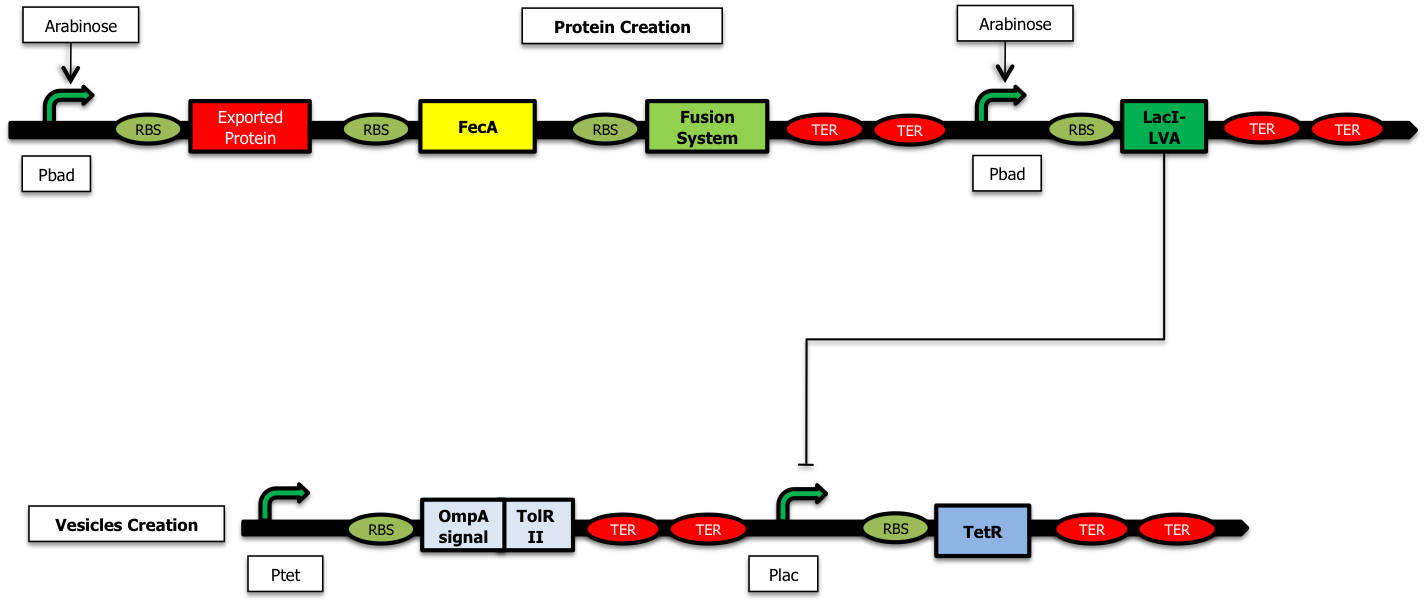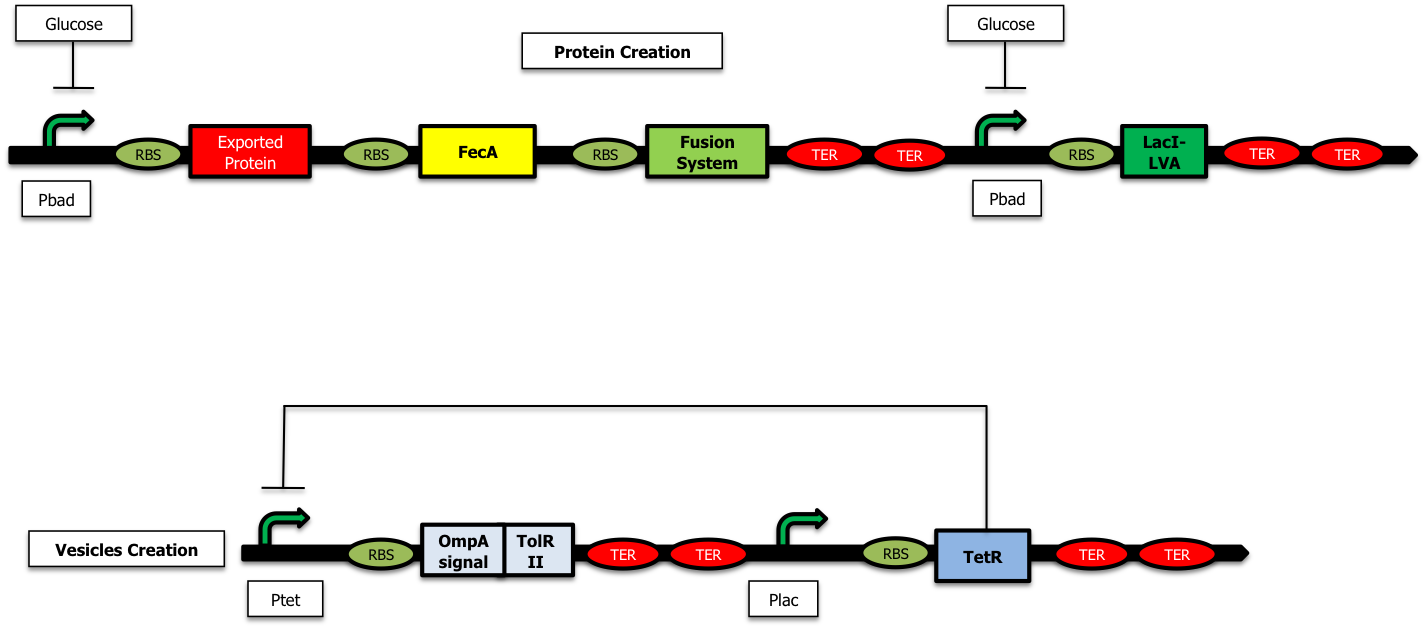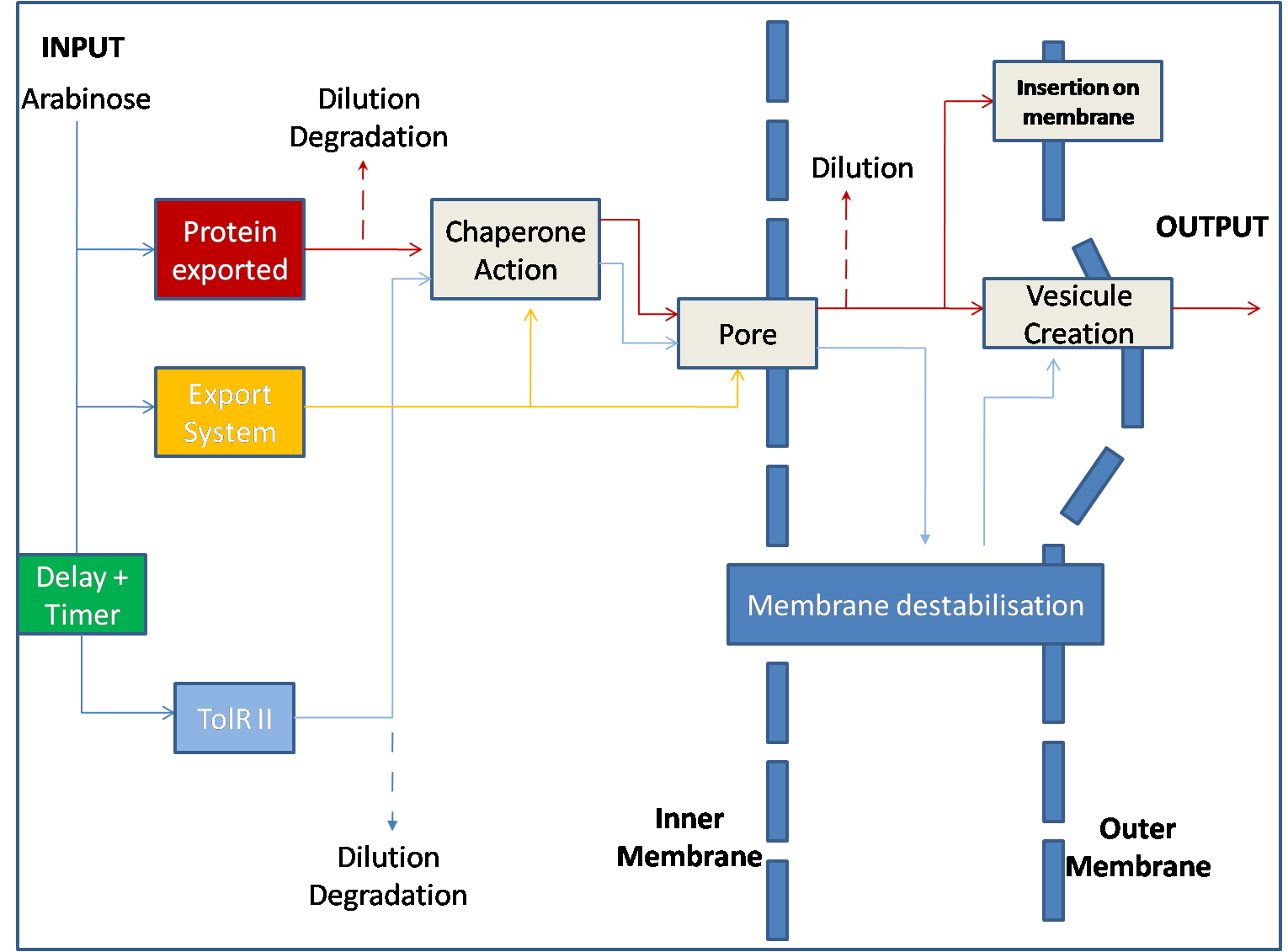Team:Paris/Project
From 2009.igem.org
(→Overall project: Message in a bubble) |
Christophe.R (Talk | contribs) |
||
| Line 1: | Line 1: | ||
{{Template:Paris2009}} | {{Template:Paris2009}} | ||
| - | {{Template: | + | {{Template:Paris2009_menu7}} |
== '''Overall project:''' '''''Message in a bubble'''''== | == '''Overall project:''' '''''Message in a bubble'''''== | ||
blabla | blabla | ||
Revision as of 14:05, 27 August 2009
Contents |
Overall project: Message in a bubble
blabla
A. Plasmid construction
The plasmid construction is divided into 2 functionnal modules :
- The emission system, which aims at producing vesicules.
- The reception system of the signal sent via the vesicules.
A.1. The emission system
To implement our vesicles emission project, we had to think about a few constraint in order to make our system efficient. To put into place all the functionalities we needed, we decided to use 2 different plasmids as shown on the image below.
First of all, before sending vesicules into the surrounding medium, we have to make sure that every molecule and protein that has to be inside the vesicules is already into place before the bacteria starts the creation of vesicules. In other words, the "emitting" bacteria must produce the protein of interest, the export systems, the FecA proteins as well as the fusion mechanism before creating vesicules.
To create this delay between the creation of proteins and the production of vesicules, we used a double repressor made of LacI and TetR. The LacI biobrick in placed in plasmid A, downstream the pBad promoter and once it is synthetised, it acts as a repressor on the pLac promoter in plasmid B thus inhibiting the production of TetR. The pTetR promoter is no longer repressed by TetR and the creation of non functional TolR can start as well as the emission of vesicules.
As the creation of vesicules via the over-expression of TolR disturbs the membrane integrity and can creta a important cell lysis, it appeared very important to find a way to avoid a long lasting expression of our TolR biobrick once the input signal is on (presence of arabinose in the medium).
To solve this problem, we decided to place a tag on the LacI protein to speed up its degradation ; as a consequence, once the arabinose in the medium is not important enough to ensure an important expression of the genes downstream the pBad promoter, a litle LacI is created and is rapidly degraded by the proteases. It should be unable to repress the pLac promoter and to activate the production of TolR.
- This is the complete construction when the input signal, the presence of Arabinos, in ON. In this configuration, proteins are created as well as vesicules :
- In the absence of arabinose in the medium, the Pbad promoter is repressed and there is no production of proteins nor vesicules :
A more accurate description of the parts used at each step of the creation process (including links to the parts registry and references) can be found in the different subdivision of the project.
A.2. The reception system
 "
"


